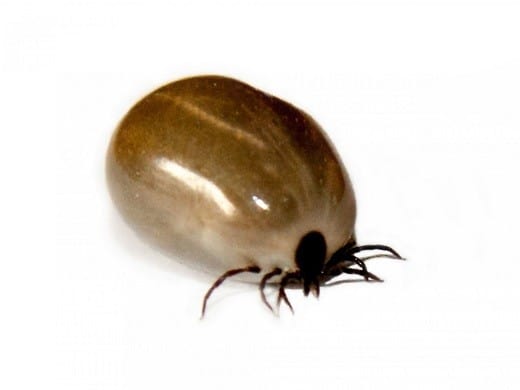
 A new study has found that pet owners more at risk of getting Lyme disease and other nasty ailments.
A new study has found that pet owners more at risk of getting Lyme disease and other nasty ailments.
Lyme disease caused by infection from tick bites is a growing problem in North America, and a new study from the Centers for Disease Control and Prevention in the United States shows that the risk is more amplified for owners of pets like cats and dogs, which can bring ticks into the home.
Researchers surveyed citizens from counties in three US states, Connecticut, Maryland and New York, all of which have high incidences of reported Lyme disease, and asked participants whether they had pets that went outdoors. Of the 2,590 households that took part, over half (56.5 per cent) reported owning a dog or cat that was allowed outside, 65.3 per cent of which had dogs only, 14.9 per cent had cats only and 19.7 per cent had both.
About 31 per cent of pet owners reporting having found a tick crawling on a (human) resident of the household and 19 per cent reported having found a tick attached to a human resident. By comparison, only 20 per cent of non-pet-owners reported finding ticks on a person and 14 per cent found an attached tick.
The numbers confirm the higher risk for pet-owners, say the study’s authors. “This large evaluation of pet ownership, human tick encounters and tick-borne diseases shows that pet owners, whether of cats or dogs, are at increased risk of encountering ticks and suggests that pet owners are at an increased risk of developing tick-borne disease,” say the study’s authors, whose research is published in the journal Zoonoses and Public Health.
Black-legged ticks, commonly known as deer ticks, can carry and transmit bacteria which causes Lyme disease, a sometimes hard-to-diagnose illness that can present with a wide range of symptoms, from flu-like symptoms like headaches, sore throat and stiffness to more serious problems like heart problems, eye problems, liver inflammation and neurological issues.
The number of cases of Lyme disease in Canada has been on the rise in recent years, from 144 reported cases in 2009 to a high of 917 in 2015. The increase has been in part attributed to growing awareness and better diagnosis of the disease, but researchers also say exploding tick populations are also to blame. Thanks to climate change, Canadian environments have become more amenable to ticks, as the tiny creatures need the weather to be warm enough to complete their full reproductive cycle.
“The more the temperature increases, the larger they extend the range of propagation,” says Hugo Beltrami, professor and Canada Research Chair in climate dynamics at St Francis Xavier University in Antigonish, Nova Scotia, to CBC News.
Researchers for the new study say that pet owners should be reminded to conduct daily tick checks of all household members, including their pets, and to consult their veterinarian about effective tick control products.
Ticks can be found in tall grasses, leaf litter and shrubbery and can attach themselves to passing animals, humans included. On pets, ticks can be found anywhere but common places where owners sometimes fail to check include between the toes and around the ears and armpits.
Leave a Reply
You must be logged in to post a comment.



 Share
Share Tweet
Tweet Share
Share




Comment